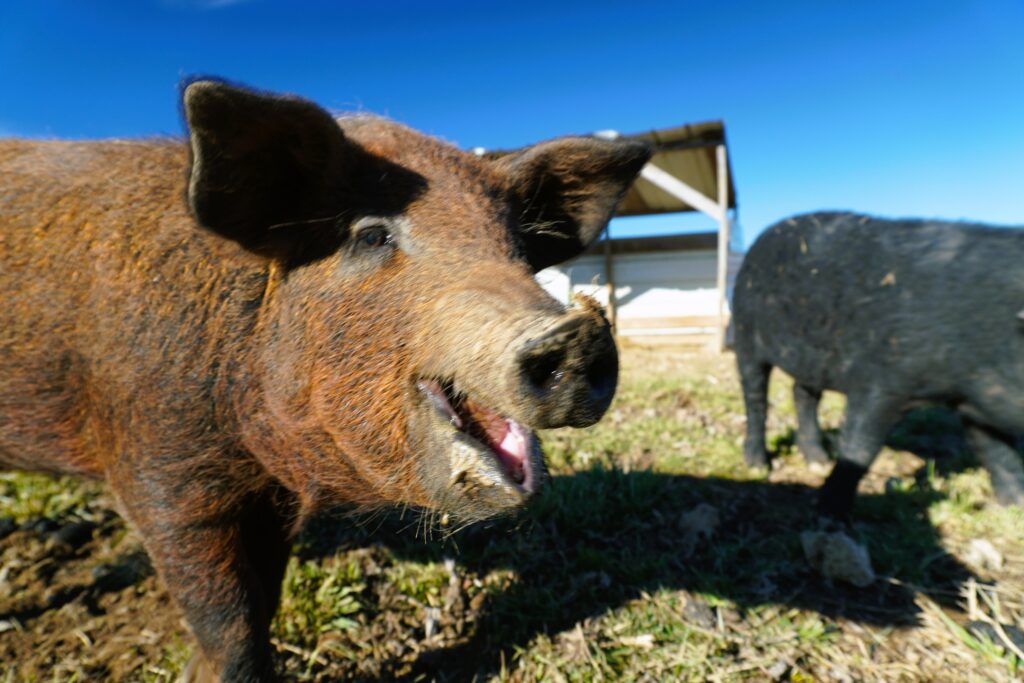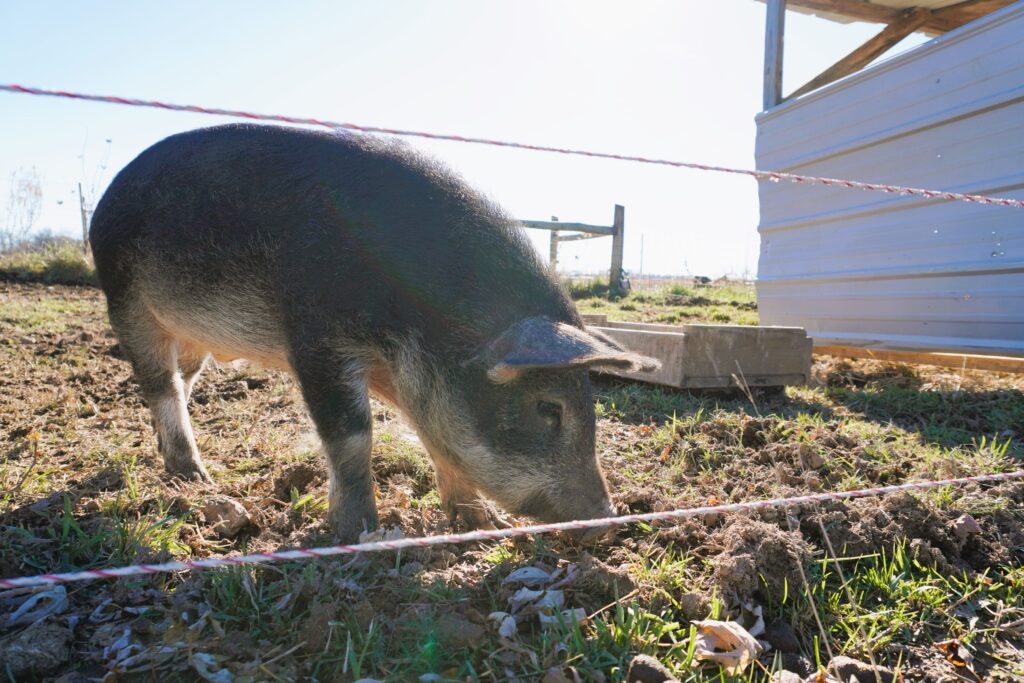
If you’ve ever raised pigs on pasture, or are interested in raising pigs on pasture, either for your own use or as a farm business, one of the most valuable tools you can have, is an electric fence setup. There are multiple reasons for this:
- It allows you to be more efficient in pasture management. If you don’t want your pigs to totally destroy the ground, they have to stay on the move. Some disturbance is good, but making your property look like the surface of the moon really isn’t, unless that’s the kind of thing you’re going for. Keeping the pigs moving through the pasture allows them to make the most of the forage that’s available without destroying it. We want it to grow back, well, the grasses anyway.
- It’s cheap. Pig panels are great, woven wire is too, but they’re both very expensive especially in a pastured pork operation. For smaller pigs you might need a couple strands of poly-wire, but for larger pigs a single strand is all you need. In the pasture I mostly use fiberglass rods and tread-in posts that are usually two or three dollars each. The reels of poly-wire are something that I already keep around for the cows and even the goats, when we have them.
- Also, electric fencing is mobile. Like I said before, wire panels and woven wire are expensive, but they’re also fixed in place. I’m not sure about you all, but I hate moving panels around. It can be done, and a lot of people do it, but I’m not one of them and I have no desire to be in the future. Woven wire on the other hand is meant to be permanent. If you’re thinking of using woven wire as a mobile fence, you should probably have your head examined. Seriously.
Those are a few big reasons to use electric fencing in you’re pastured pig operation.
Pigs have to be trained to electric fencing.
They’re natural inclination is to run through the fence when they get shocked, which is not the desired outcome. I’m not sure how things work around your place, but if they run through the electric fence here, they’re probably not where I want them to be.
So, in order to re-program the pigs, there has to be a physical barrier behind the electric wire. In my case, I use wire hog panels. You can get these at just about any farm store. They’re 34 inches high and 16 feet long. In my neck of the woods, they’re selling for around $32 each right now. I use 4 to make a 16×16 training pen. I support them with steel t-posts spaced just over 5 feet apart. I use a total of 12 posts. 2 in the middle of each panel and one at each corner.
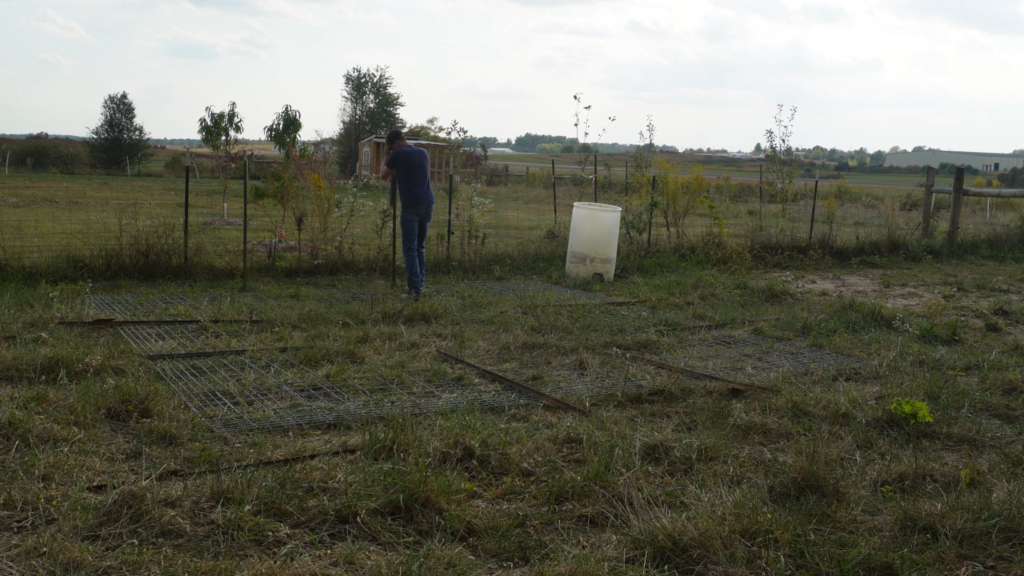
Some might think this is overkill, but a pig is a ball of muscle. If they manage to get under a loose panel, they can destroy the panel and escape. Trust me, I’ve made that mistake. Chasing pigs that you didn’t have to is not fun. Especially if you’re in your late thirty’s and out of shape.
Which brings me to another piece of advice, never believe someone when they tell you that the pig or pigs you a buying from them are trained to electric fence. It’s not that you shouldn’t trust them, it’s that you should verify it, at your farm, in your training pen. Once again, I speak from experience. There’s nothing like meeting new neighbors by chasing a 40-pound feeder pig through their front yard. I’m just glad I’ve got good neighbors. You might not.
So, as I was saying, 4 hog panels, 12 t-posts. I attach the panels to the posts with t-post clips, I used 3. One at the top, one a couple inches from the ground, and one about 14 inches or so from the ground. I wired the panels together where I attached them to the posts in the corners. The t-posts are on the outside of the panels on the sides, so that any pressure is against the posts. The posts are on the inside of the panels at the corners so that they can be wired together good and tight and to protect the edges from the pigs trying to jam their noses between the panels.
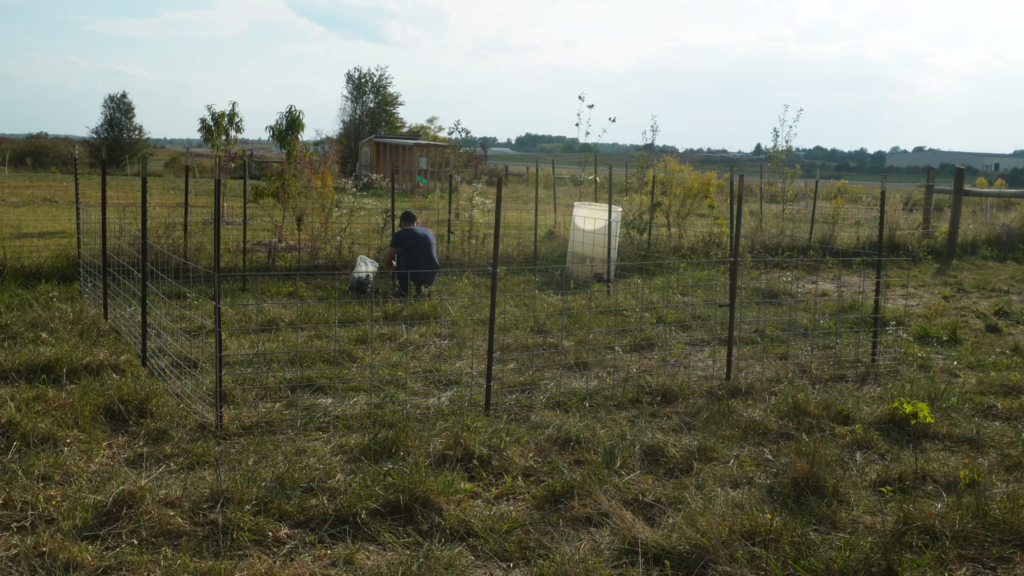
When I have all of that work done, and I’ve caught my breath, I put the 5” offset insulators on the post about nose high or just below. I also tie some cheap round corner insulators in the corners. Next I run the poly-wire through the insulators and tie it off to a cheap in-line strainer that I can tighten by hand. You don’t want to over tighten it; firm is good. Then, I put their water barrel, feed trough, and junk pile shelter in.
Check out my awesome DIY pig shelter video here
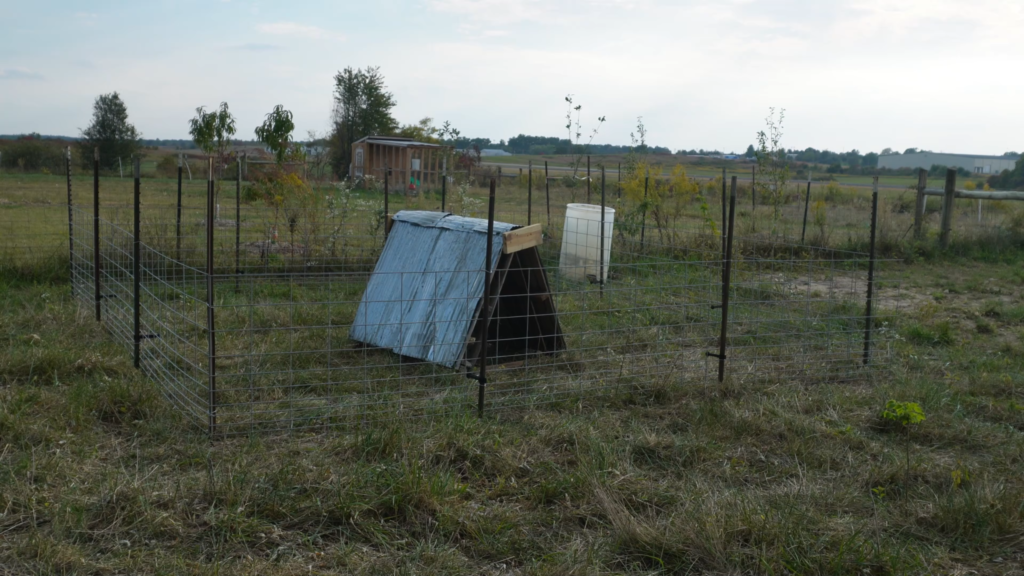
Once the fence is juiced up, the only thing to do is introduce the pigs to the training pen.
Like I mentioned before, they naturally want to run through the wire when they get their shock. In this kind of pen, they have no choice but to back up. That’s why it’s important for them to all get shocked, probably multiple times. Old habits can be hard to break.
That being said, pigs are very smart and have very good memories. So, after they’ve been in this pen for a couple weeks, I should be able to open up a corner and not have to worry about them trying to escape. In fact, most won’t cross over an area where they know the fence was, but that’s a topic for another day.
